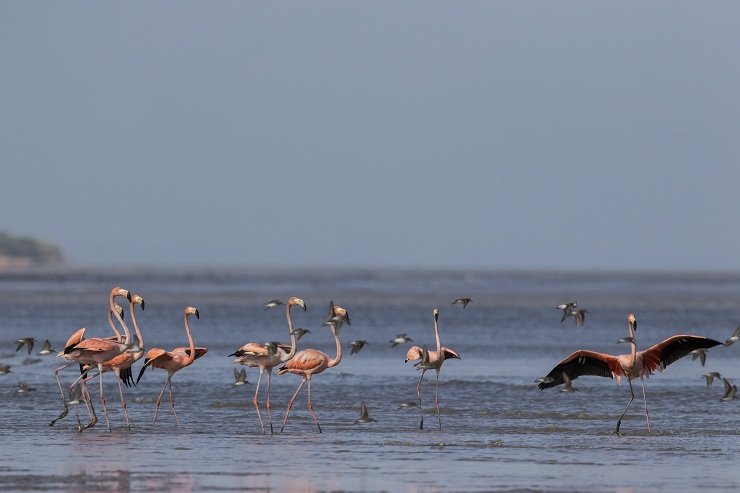
There aren’t many places on the planet where one can mention the words ‘forest’ and ‘flamingo’ together. Far less experience the two in a single morning. Fortunately, I live in Trinidad and Tobago – a twin-island nation that boasts the second highest density of bird species in the world. With 489 species recorded (including rarities and vagrants) across a land area that totals less than 2,000 square miles, T&T facilitates quick and easy changes of scenery.
Another stroke of good fortune here was the government’s proactive, hard-lined approach to Covid-19. Our international borders remain closed at this point, but swift action by the relevant authorities in the face of legal threats and dissenting voices has led to our present position. A position in which we have had no new cases for just over a month, and more importantly – we can resume outdoor activity.
Birders who are lucky enough to live near Trinidad’s west coast have been reporting up to two hundred American Flamingos from various locations along the coastline. We checked a couple locations as the sun rose in the east. Numerous White-winged Swallows were darting over the water’s surface, picking off insects.
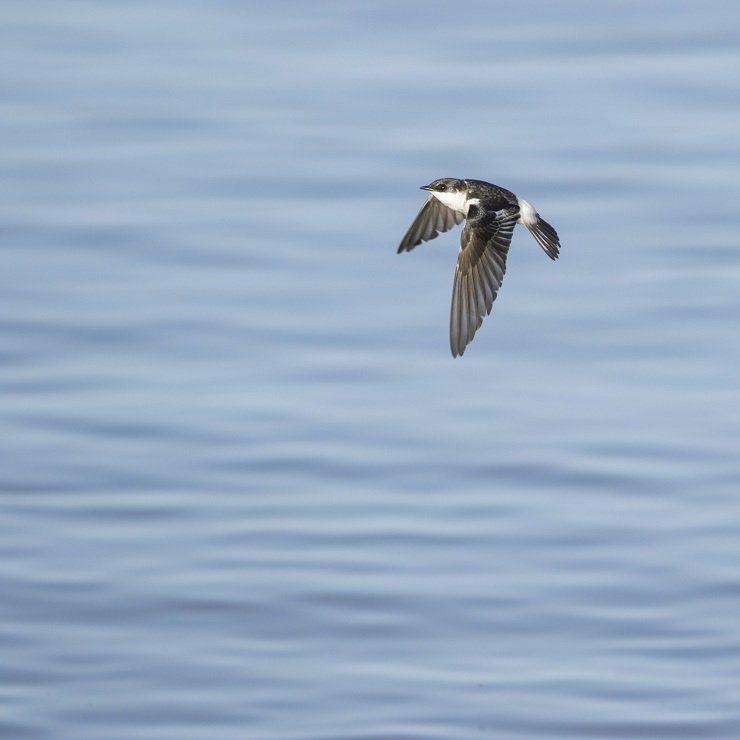
An immature White-winged Swallow. As they reach adulthood they acquire the hallmark rich iridescent blue.
Whilst distracted by a shoal of Anableps next to me, four American Flamingos flew by. We later saw another group of 19, and finally a distant flock of 52. Activity was quite muted, the birds were quietly and unhurriedly going about their business. A pair of immature Scarlet Ibis walked through the crevices in the mud, engrossed in their search for colour-enhancing crustaceans. They seemed surprised to see me, curious even. I wish them well – as the fisherfolk informed me that poaching of these birds continues.
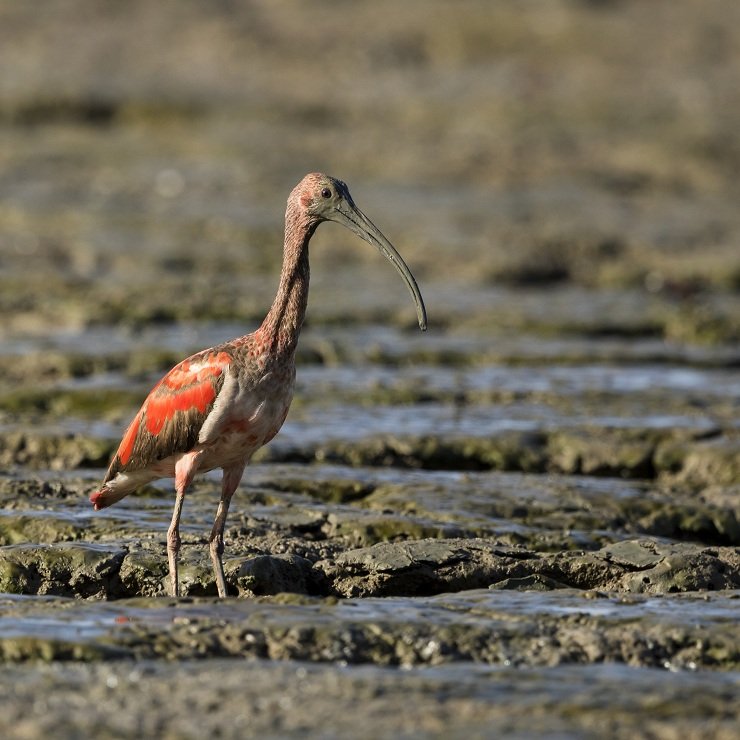
This immature Scarlet Ibis would gradually lose its brown feathers and become completely scarlet in a few weeks.
After about an hour, a sudden alarm call from a suspicious Whimbrel panicked everyone. Thanks to the alarm I managed to see almost 30 Semipalmated Sandpipers – they were previously hidden within the endless, formless details of the intertidal mudflats.

American Flamingos and Semipalmated Sandpipers.
Numerous Black Vultures, Snowy Egrets and Brown Pelicans were also present. They all kept an eye or two out for discarded fish from returning fishing vessels.
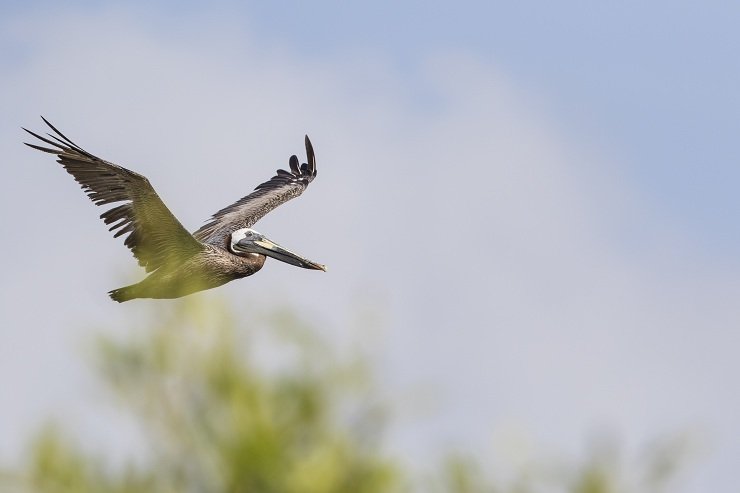
Brown Pelican
Tricoloured and Little Blue Herons as well as Black-crowned and Yellow-crowned Night-Herons kept their distance for the most part. A Mangrove Rail called continuously for about twenty minutes from within the protective cover of the mangrove. Carib Grackles and Pied Water Tyrants darted around as well.
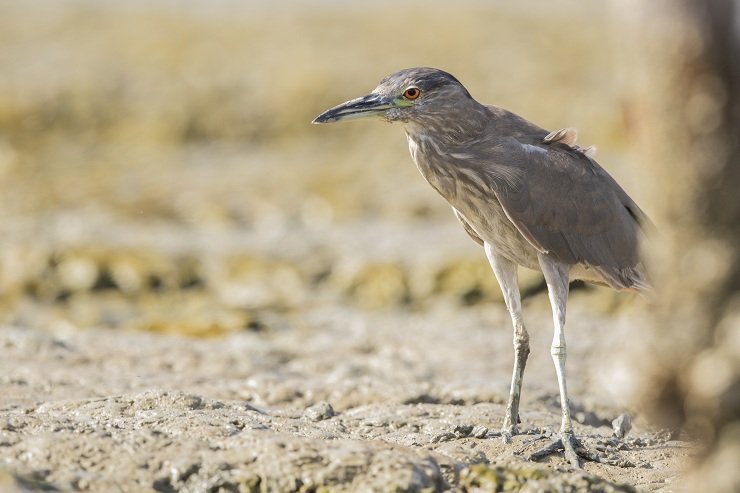
An immature Black-crowned Night-Heron remained immobile, perfecting the art of the patient sit-and-wait.
The tropical sun is relentless, however. At about 8:30am we couldn’t take the burning any more and retreated to some nearby cocoa estates. As we pulled in, a Long-billed Gnatwren called from one side of the road and a pair of Violaceous Euphonias squabbled on the other. The familiar short, light whistle of a Golden-headed Manakin excited our senses, although it remained hidden in the canopy. The first species we got a good view of was an extremely cooperative pair of White-shouldered Tanagers. My camera was obviously still set to photograph large, flying birds in full sun so the first few images I made of the male White-shouldered Tanager were completely underexposed. Thankfully, this uncommonly seen tanager casually went about its business and I was afforded the luxury of being able to adjust my settings for the forest.
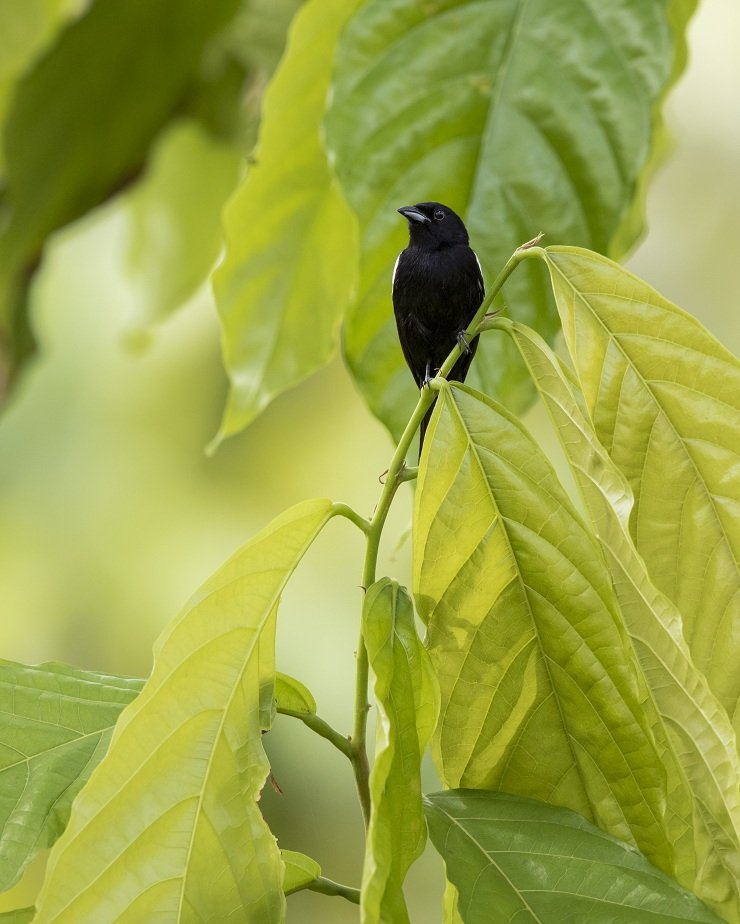
White-shouldered Tanager
Within a few short minutes, we recorded another rarely seen bird – a confiding Variegated Flycatcher – one of a pair actually. Like many other birds we saw that morning, we photographed it and left it right where we found it.
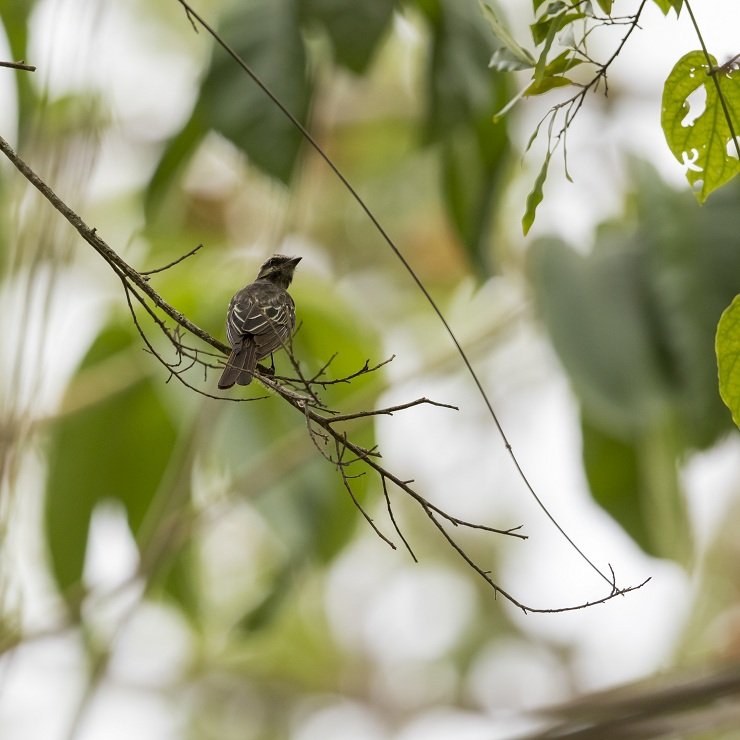
Variegated Flycatcher
Those experiences also served to illustrate a point that was enforced several times during our birding session within the forest that morning. With a reduced level of human interaction, the birds in this patch of forest seemed relaxed. More relaxed than I had ever witnessed – and this patch is one of my fondest, I’ve birded there numerous times since I was introduced to the area in 2013. Especially within recent times the birds have become very edgy and if they don’t fly off immediately, they would tend to choose obfuscated perches from which they would peer at us human intruders – vanishing once eye-contact is made.
Now, it was different. The birds didn’t seem to care. I couldn’t help but think that this is how it should be. We, as humans must strive to be casual, passive participants in life. Only then would the simple joys and pleasures be revealed to us – like a pair of majestic White Hawks perched low. Personally, I saw only one (joys of backseat birding) but I had never before photographed this species perched so I was still thoroughly thrilled.
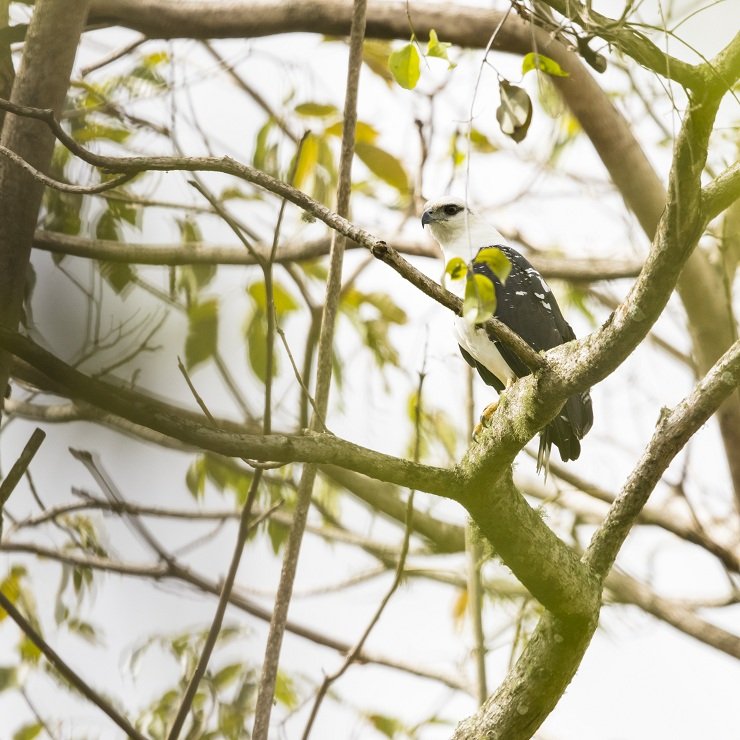
White Hawk
We paid a visit to a patch fondly referred to as the “toucan spot” – in fact I wrote about it here – and were not disappointed. The sound of a calling Channel-billed Toucan from the very top of a tall tree is an integral part of what makes the forest complete.
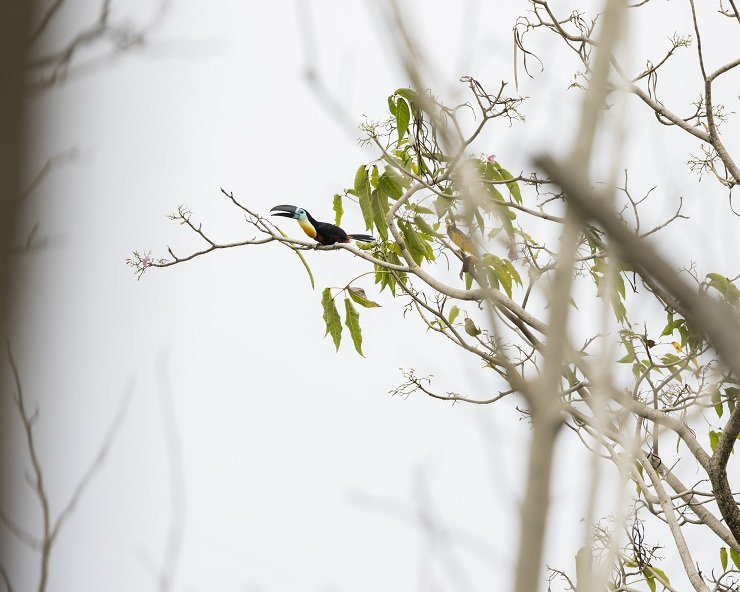
Channel-billed Toucan
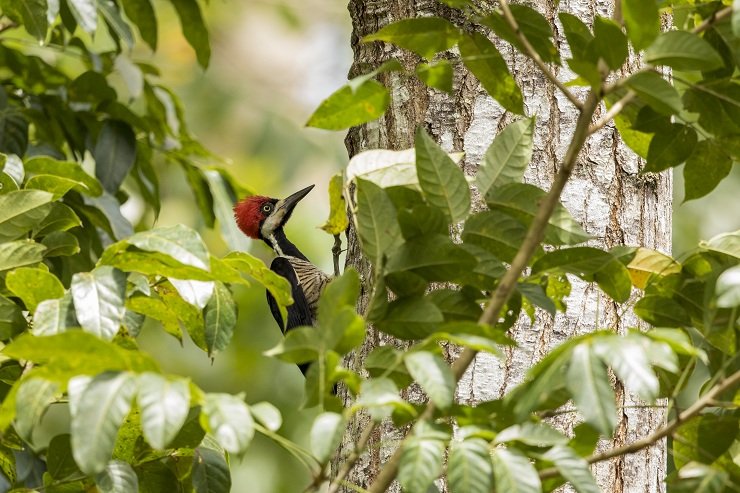
Further along the road, a pair of young Crimson-crested Woodpeckers fed nonchalantly from tree to tree.
By this time, we were forced to return to civilization due to vocal stomachs – but we were completely awed by the nature of Mother Nature. We witnessed how she has gotten a chance to breathe without the choking fumes and oppressive noise of a constant line of vehicles traversing and bisecting forests everywhere. The absence of the mass operation of human society has had effects that are plain to see, for those who can.
My only hope is that we move into the future in a direction and manner that is responsible and inclusive.













Leave a Comment